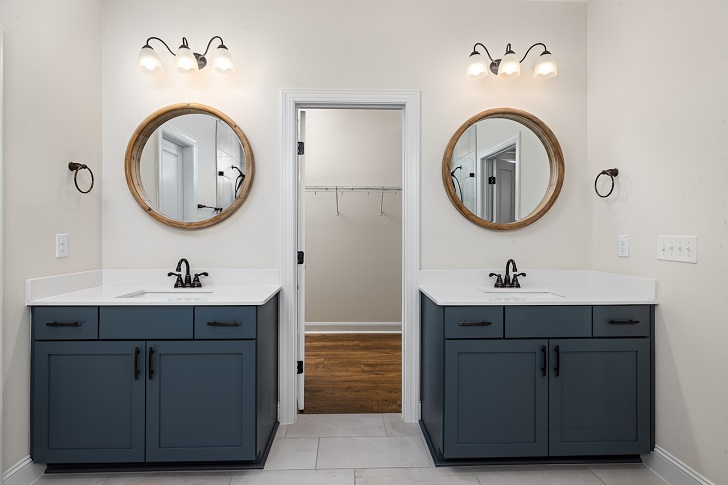Living in a small space can be cozy and charming but also cramped and confining. Fortunately, several clever design strategies can help you make a small room appear larger and more inviting. Here are ten tips and tricks to create the illusion of spaciousness and make the most out of your compact living area.
Light and Bright Colors
Color plays a crucial role in influencing the perception of space. Light and neutral colors, such as whites, creams, pastels, and soft grays, reflect light and make a room feel more open and airy.

Darker colors, on the other hand, tend to absorb light and can create a sense of enclosure. By choosing light and bright colors for your walls, ceilings, and furniture, you can visually expand the room and create an illusion of added space.
Optimize Natural Light
Maximizing natural light is another effective way to open up a small room. Keep your windows unobstructed to filter in as much light as possible. Avoid heavy curtains or opt for sheer, light-colored curtains that diffuse sunlight while maintaining privacy.
If privacy is not a concern, consider leaving the windows bare to let the outside scenery merge with the interior, giving the impression of an extended space.
Mirrors to Reflect Space
Mirrors are a powerful tool for making a small room feel larger. They reflect light and create the illusion of depth, visually expanding the area. Strategically place mirrors on walls opposite windows to bounce natural light around the room. Additionally, mirrored furniture or decor pieces can enhance the effect and add a touch of elegance to the space.

Smart Furniture Selection
In a small room, choosing the right furniture is crucial. Opt for sleek, low-profile furniture with clean lines, as bulky or oversized pieces can overwhelm the space.
Multi-functional furniture, like storage ottomans or sofa beds, can help you save space and keep the room organized. Consider furniture with exposed legs; this creates a sense of openness by allowing light to flow under the pieces.
Declutter and Organize
Clutter can make a small room feel even smaller and more chaotic. Embrace a minimalist approach and keep only essential items in the room. Invest in clever storage solutions, such as floating shelves, wall-mounted cabinets, and under-bed storage, to keep belongings tucked away and maintain a clean, uncluttered look.
Use Vertical Space
Use vertical space to draw the eye upward and create an impression of height. Floor-to-ceiling curtains, tall bookshelves, or vertical stripes on the walls can all contribute to this effect. Directing the focus upward will make the room more open and spacious.

Keep the Floor Visible
A clear floor area can make a room feel more open and less crowded. Avoid large area rugs that cover most of the floor; opt for smaller or none. The visible floor gives the illusion of a larger space and helps create a seamless flow.
Utilize Light and Layered Textures
Adding different textures to a small room can bring depth and visual interest without overwhelming the space. Choose lightweight fabrics for curtains and furniture upholstery to allow light to pass through easily. Incorporate different textures through throw pillows, rugs, and blankets to create a layered and inviting atmosphere.
Incorporate Glass and Lucite
Glass and lucite (acrylic) materials have the unique quality of transparency, making them excellent choices for small rooms. Glass coffee tables, lucite chairs, or glass shelving units can provide functionality without visually cluttering the space.




